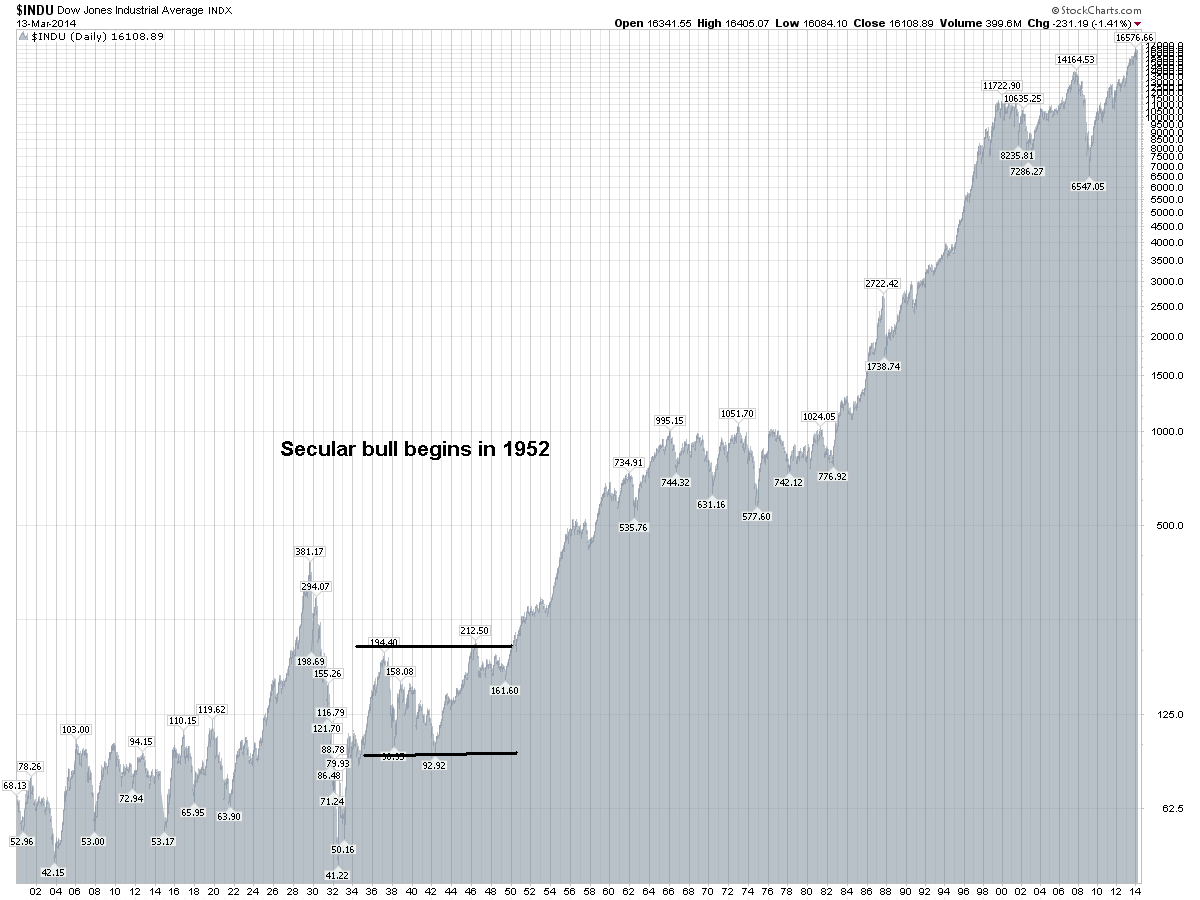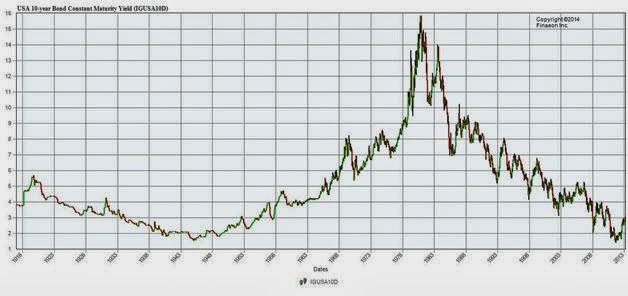This is another post in the series about the question of whether we are experiencing a brand new secular bull market (see New all-time highs = Secular bull?).
P/Es are elevated
The struggle I've had is that secular bulls typically don't start at these kinds of elevated valuation levels. Here is a chart of S&P 500 P/E ratios from Chart of the Day that goes back to the start of the 20th Century. Note that P/E ratios are at the top of their historical range, especially if we were to exclude the anomalous episodes of the Tech Bubble period and the Lehman Crisis.

What about interest rates? The inverse of P/E is E/P, or earnings yield, which should be compared to the prevailing interest rates of the time. (This approach, by the way, forms the theoretical basis for the so-called Fed Model.) Here is a chart of 10-year Treasury yields going back to 1918, courtesy of Global Financial Data. The other comparable episode of low bond yields occurred during the period from the late 1930's to the mid-1950's.
Now look at this long term chart of the Dow. The stock market was range bound for most of that period until a new secular bull was launched about 1952:

In my last post on this topic, I wrote:
When he puts it all together, my inner investor thinks that, if we are indeed seeing a new secular bull market, the extraordinary measures undertaken by global central banks in the wake of the Lehman Crisis has front-end loaded many of the gains to be realized in this bull.
True, the major averages have convincingly broken out to new all-time highs and it looks like a secular bull from a technician's viewpoint. However, valuation analysis suggests that this market is unlikely to see the same kinds of gains.
This market isn't a bull. It is, at best, a secular steer.
Disclosure: Cam Hui is a portfolio manager at Qwest Investment Fund Management Ltd. (“Qwest”). The opinions and any recommendations expressed in the blog are those of the author and do not reflect the opinions and recommendations of Qwest. Qwest reviews Mr. Hui’s blog to ensure it is connected with Mr. Hui’s obligation to deal fairly, honestly and in good faith with the blog’s readers.”
None of the information or opinions expressed in this blog constitutes a solicitation for the purchase or sale of any security or other instrument. Nothing in this blog constitutes investment advice and any recommendations that may be contained herein have not been based upon a consideration of the investment objectives, financial situation or particular needs of any specific recipient. Any purchase or sale activity in any securities or other instrument should be based upon your own analysis and conclusions. Past performance is not indicative of future results. Either Qwest or I may hold or control long or short positions in the securities or instruments mentioned.

